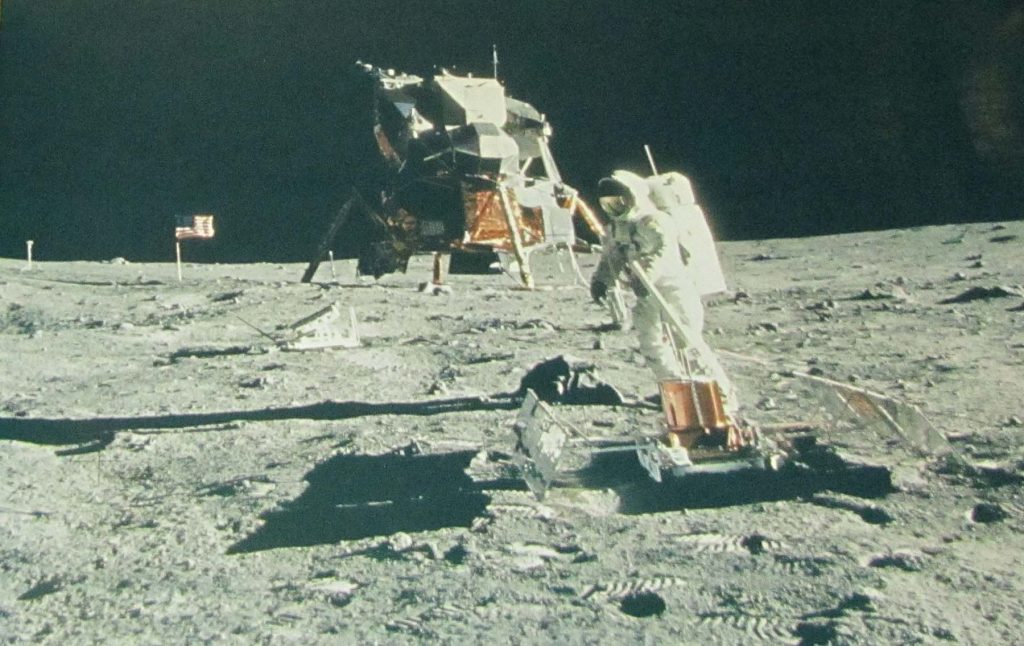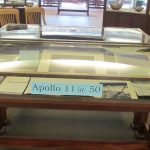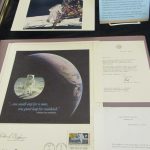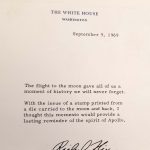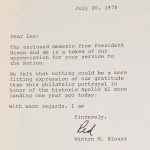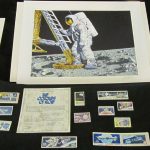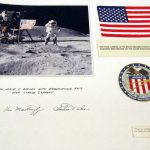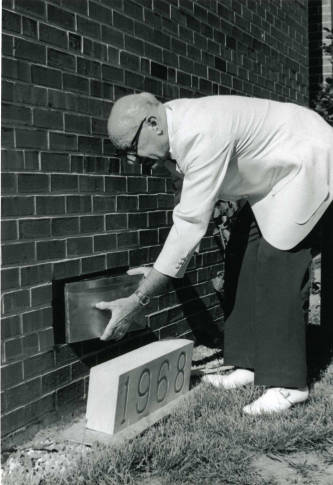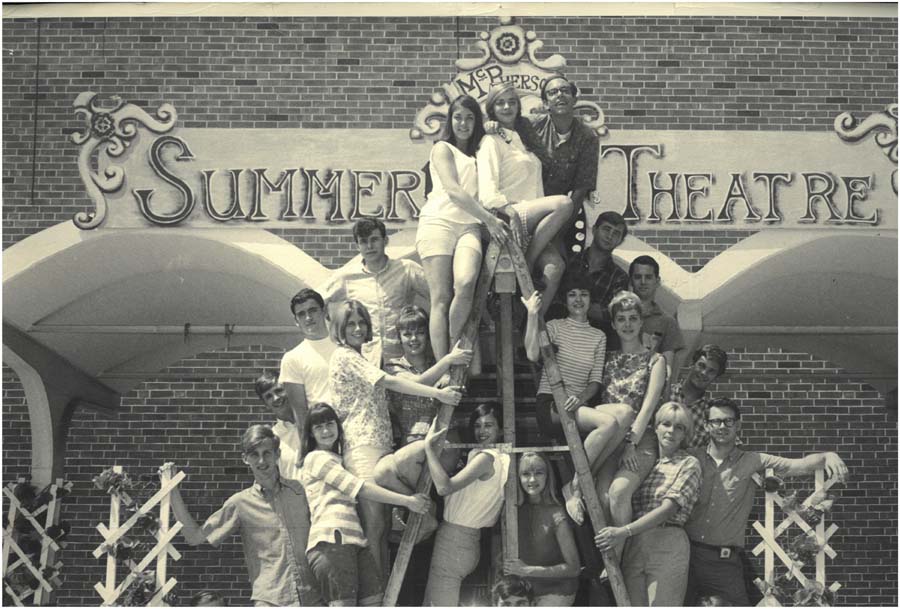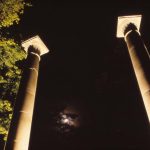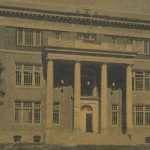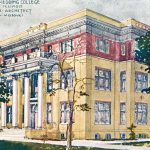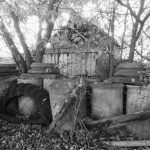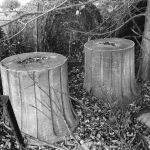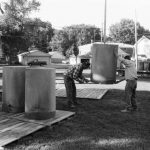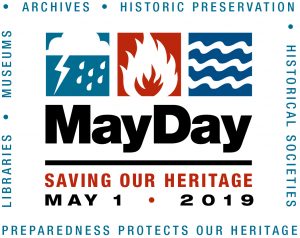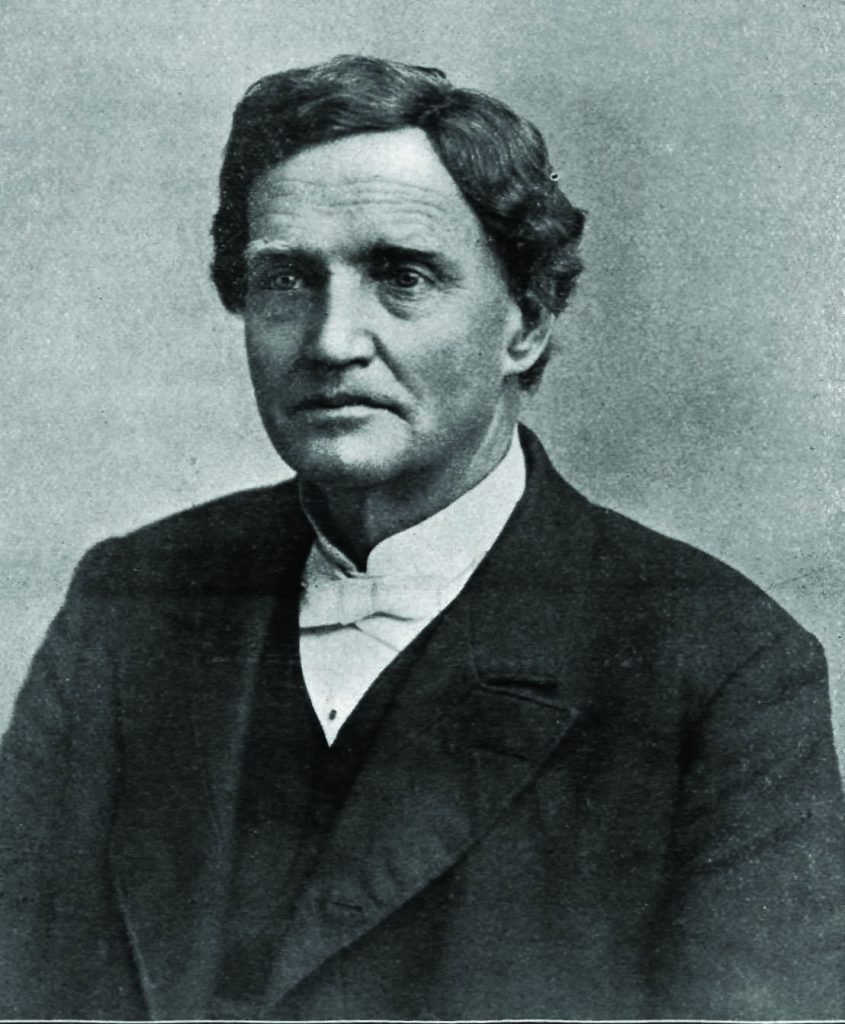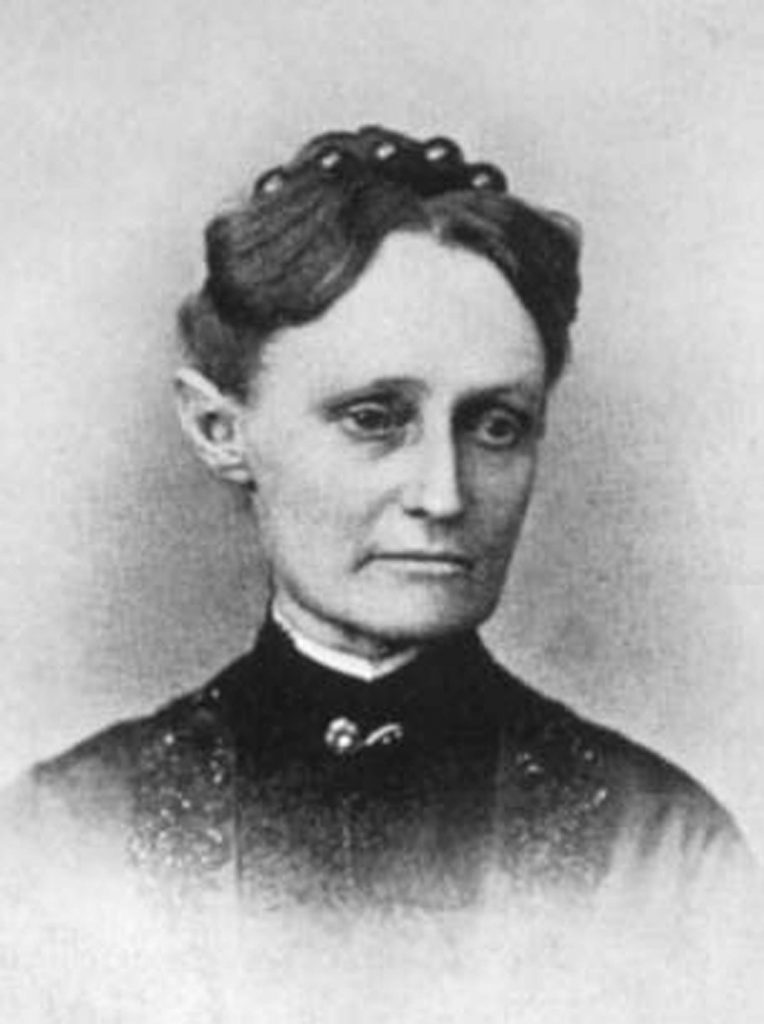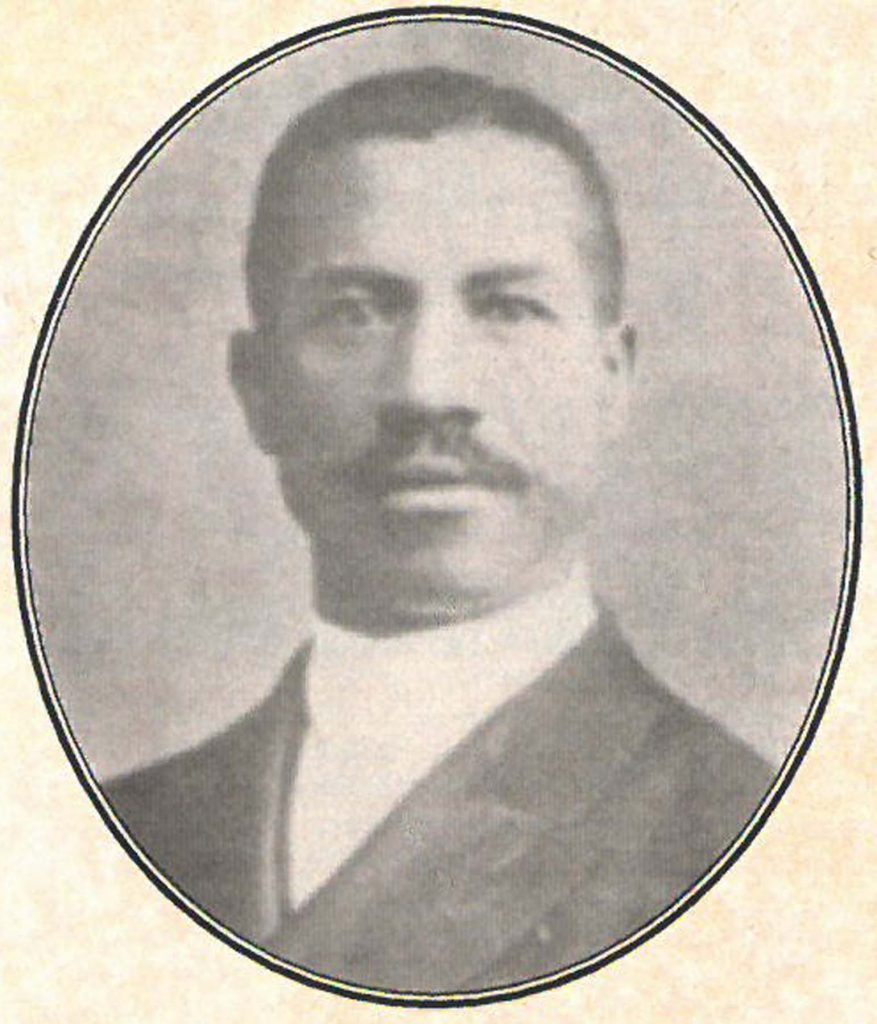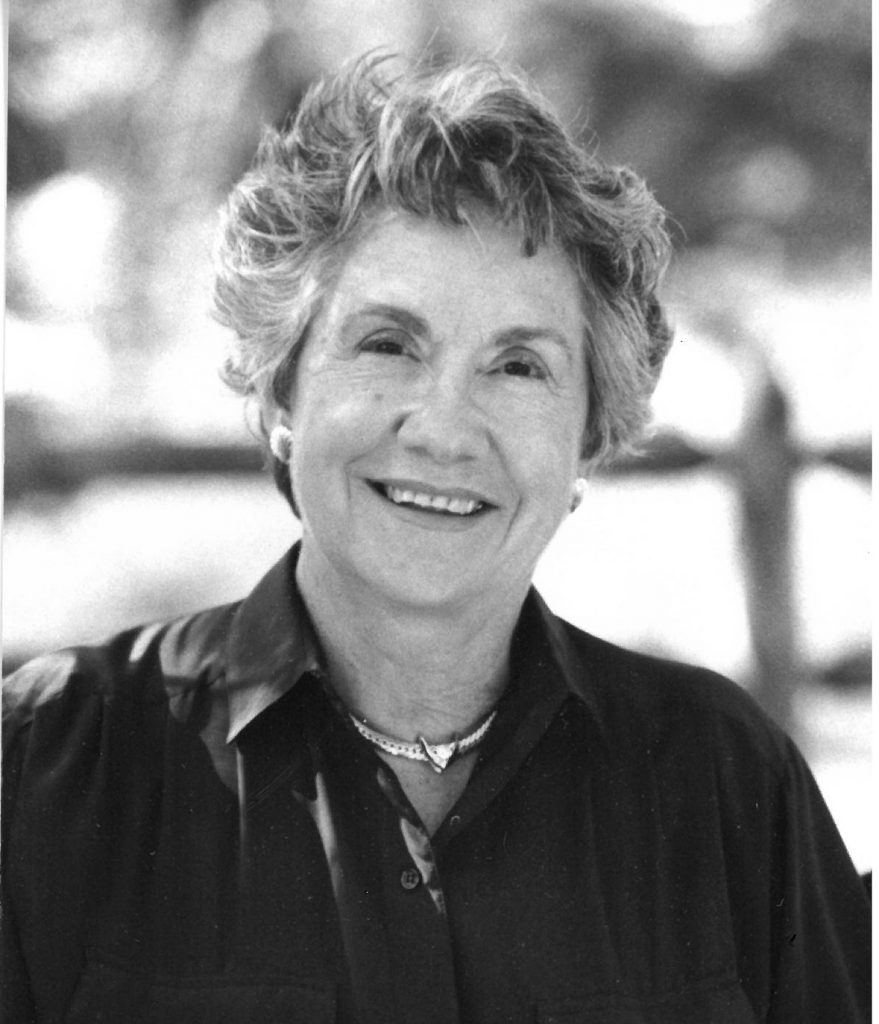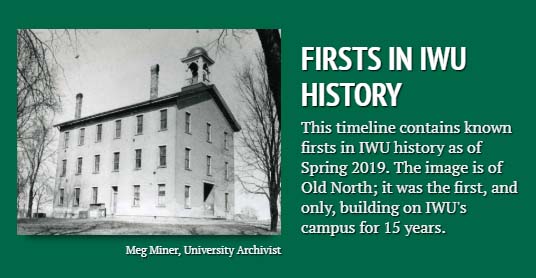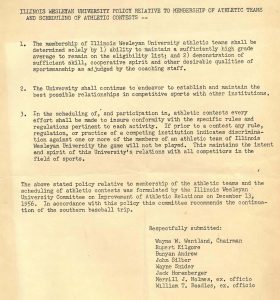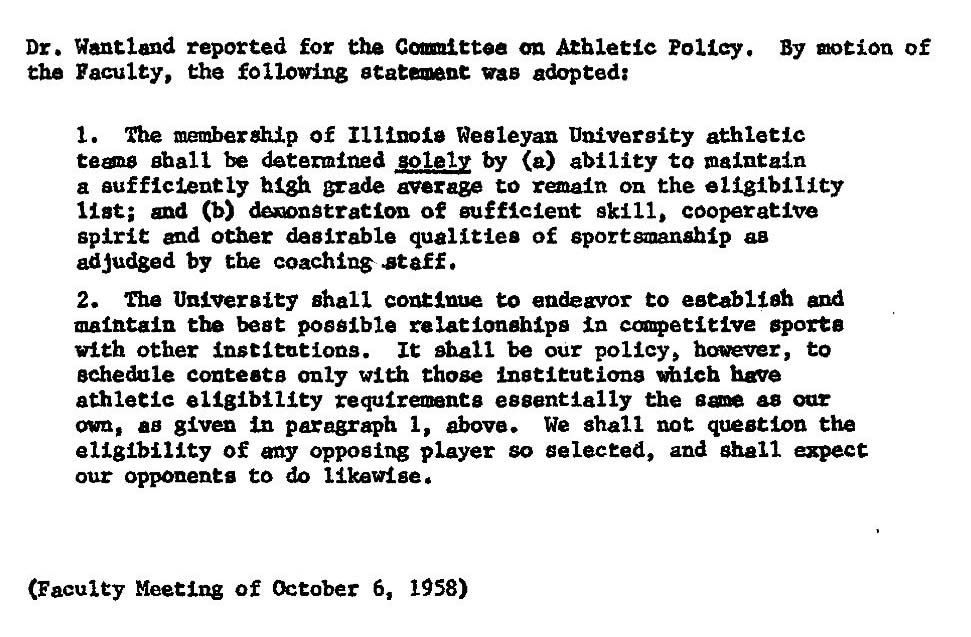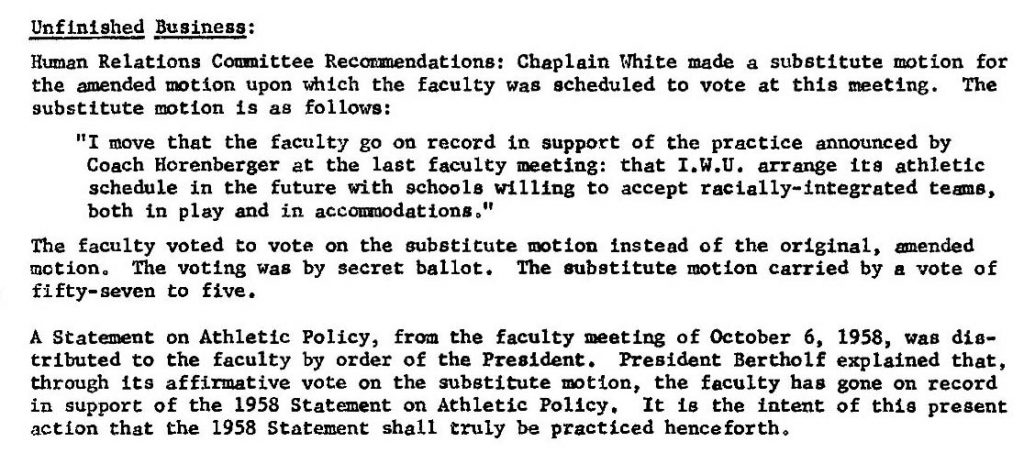No doubt, news outlets everywhere are noting the 50th anniversary of this milestone in human achievement. This post also commemorates the lunar landing and provides me with a chance to highlight both the work of our summer intern Cynthia O’Neill and one of the collections she’s been working on: The Leslie Arends Congressional Collection.
In a previous post, University Librarian Scott Walter profiled the range of learning experiences Cynthia is engaging in this summer. In the course of her preservation assessment on the Arends material, she found many Apollo program items, including a clipping that describes Arends as one of only three Illinoisans named on the 1.5″ silicon Goodwill disk left on the moon by the Apollo 11 astronauts.
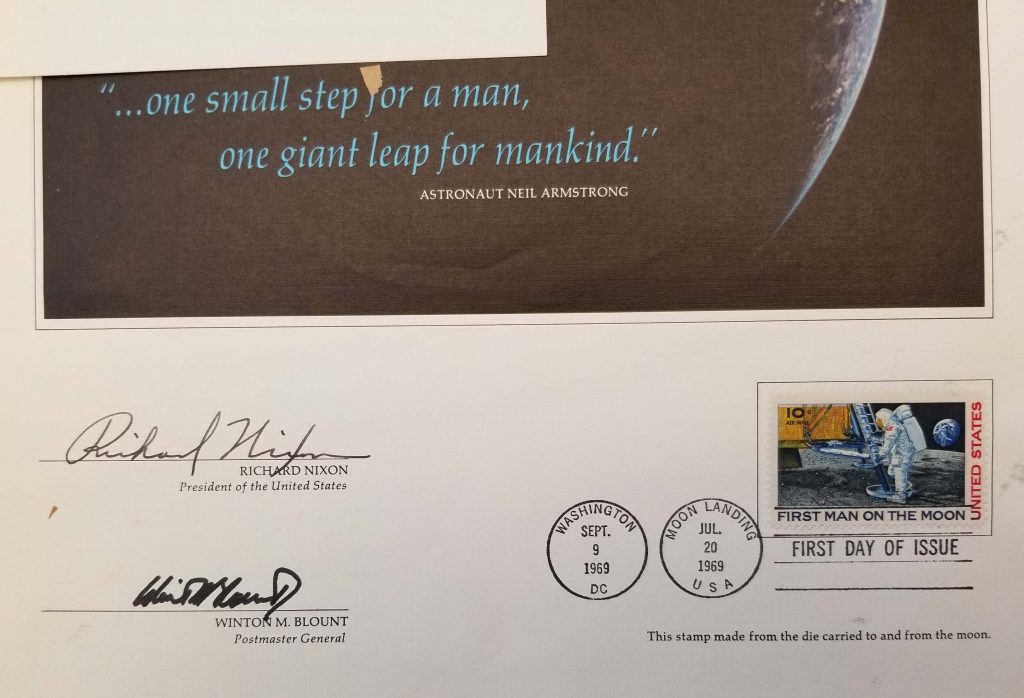
Close-up of President Richard Nixon and Postmaster General Winton Blount’s signatures on a commemorative print of the Earth as seen from orbit and a first-day-of-issue stamp created in 1971. The Armstrong quote printed at the bottom of the Moon photo states “…one small step for a man, one giant leap for mankind.”
That clipping, commemorative photos and stamps are on display in the John Wesley Powell Rotunda on The Ames Library’s entry level from now through August. (see a selection of images from the exhibit below)
Arends received these and items from other Apollo missions in thanks for his support of the program. A copy of the speech he gave on July 21, 1969 is part of this exhibit, too. In it he makes note of historic and contemporary global contributions that led to the success of Apollo 11. Visitors are invited to reflect on the broader implications of this achievement.
Another exhibit case just beyond the rotunda commemorates Arends’ involvement in the visit that Apollo 8 Commander Col. Frank Borman made to IWU in March 1969.
I will share more details on Cynthia’s internship in a future post, but I will add one additional benefit we gained by hosting her this summer. Cynthia’s full time work is as the Program Coordinator at the Eureka Public Library and she recently arranged a visit to her library by a museum director from Peoria. Cynthia shared her insights into the Arends collection with that person, and I am hoping we can arrange a loan of some materials from the Arends Collection for their Apollo-related exhibition this fall.
We welcome the opportunity to collaborate with others and readers should know that the Arends Collection and other materials located in Tate Archives and Special Collections are available for use by both the IWU community and the general public. So stop by the library’s first floor for a look at our Apollo exhibits M-F, 8-4 now through the end of August and let me know if you are interested in exploring this or any of our other collections!
- The Apollo 11 exhibit cases in the JWP Rotunda of The Ames Library.
- A close up of two items currently on display in The Ames Library.
- President Nixon’s letter stating that the stamp was printed by a die that went to the Moon with Apollo 11 crew. (click any image to enlarge)
- Postmaster General Winton M. Blount’s note to Arends accompanying the first-day-of-issue commemorative print and stamp.
- This photo is mounted to a mat board that was inscribed to Arends by NASA Administrator Dr. James C. Fletcher.
- Set of Apollo program commemorative stamps and artist’s rendition of the first step on the Moon issued in 1979.
- Arends received this signed set of items from the Apollo 16 astronauts.

